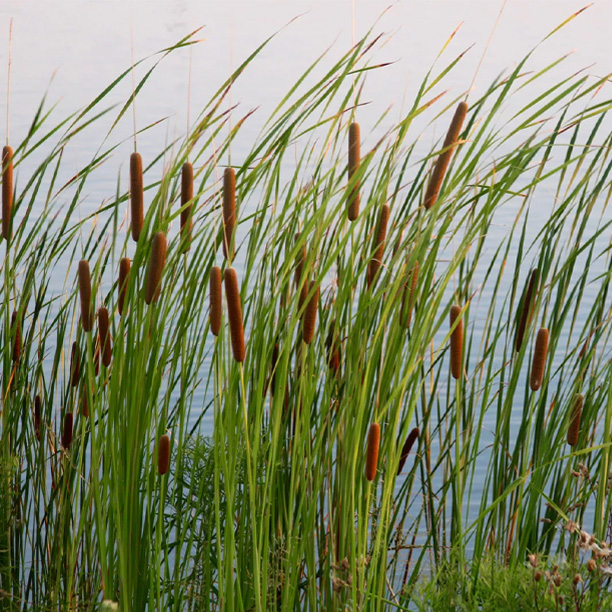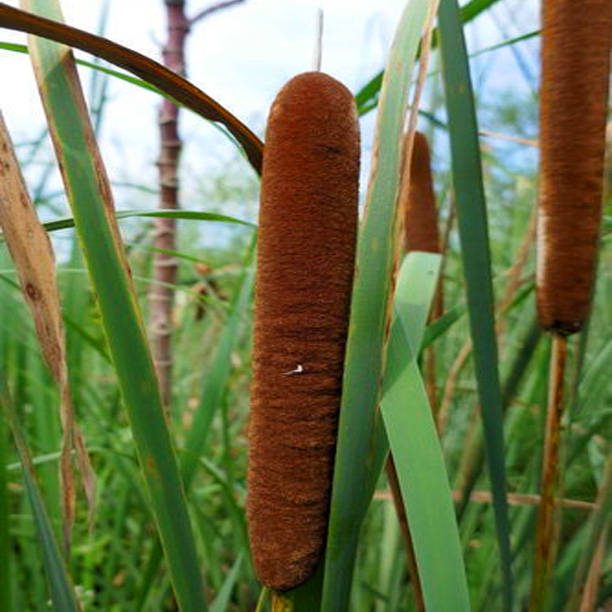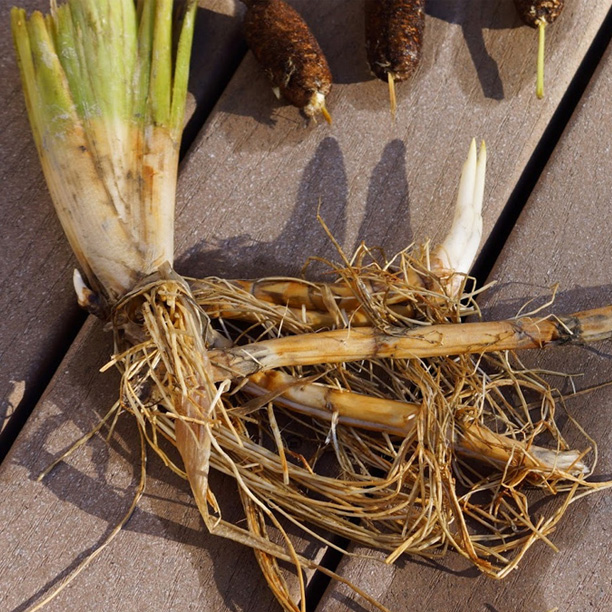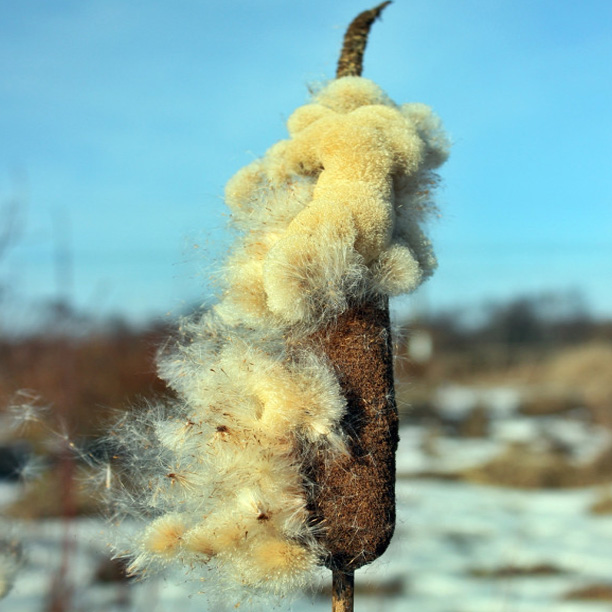Cattails
How To Identify
Cattails are tall, perennial aquatic plants (genus Typha) that thrive in wetlands and marshy areas. They are known for their distinctive brown, sausage-shaped seed heads that emerge from tall, slender stalks. Cattails have various uses, including providing food and shelter for wildlife, and some species are even edible for humans. They are tall, upright plants with long, flat, and somewhat spongy leaves. The characteristic “cattail” is a dense, cylindrical spike of flowers that develops from the top of the stalk. The male flowers are located above the female flowers.
Benefits
Different parts of cattails have been used for food, fiber, shelter, and medicine by various cultures throughout history. Cattail is rich in beta-carotene, niacin, riboflavin, thiamin, potassium, phosphorus, protein, amino acids and vitamin C. Cattails offer numerous edible and medicinal benefits. Edible parts include the roots (which can be ground into flour or cooked), young shoots (similar to asparagus), immature flower heads (like corn), pollen (used in baking), and seeds (nutty flavor). Medicinally, the gel from the leaves can be used for wounds, boils, and sores, and the root can be used as a poultice for burns and sores.
How To Find
Cattails are found globally, particularly in temperate and cold regions of the Northern and Southern Hemispheres. They typically grow in marshes, ditches, shorelines, and shallow areas of lakes, ponds, and streams.
Gathering
For harvesting leaves, use pruning shears or a knife to cut at the base of the plant, ensuring to leave some leaves for the plant’s continued growth. For harvesting pollen, place a container over the flowering spike and shake it gently to collect the pollen. For rhizomes, dig under the water and mud where the last cattail stem is, finding the horizontal root and carefully harvesting it.
How To Use
Young, tender shoots can be eaten raw, sautéed, or used in stir-fries, with a flavor similar to asparagus or cucumber. The female flowers, harvested before pollination, can be boiled or grilled and eaten with butter and salt, similar to corn on the cob. The male flowers can be boiled and eaten with butter, salt, or sugar. Pollen harvested from the male flower heads, can be used as a flour substitute in baking or added to dishes for added flavor. Cattail roots can be boiled, roasted, or dried and ground into flour to extend baking flour. Tender parts of the stalk, especially near the roots, can be cooked or eaten raw, similar to asparagus.
While not commonly eaten, cattail leaves can be used to make baskets, hats, or mats and the fluffy seed heads can be used as tinder for starting fires and is one of the best flash tinder that nature can provide.
Preservation
One of the best ways to preserve cattails it to pickle them. Clean and peel the tender white base of cattail shoots then prepare a pickling brine of water, vinegar, salt, and desired spices like garlic and dill. Pack the shoots in jars, add the brine, and either refrigerate for immediate use (will last a few months) or process using water bath canning for long term storage (up to five years).



